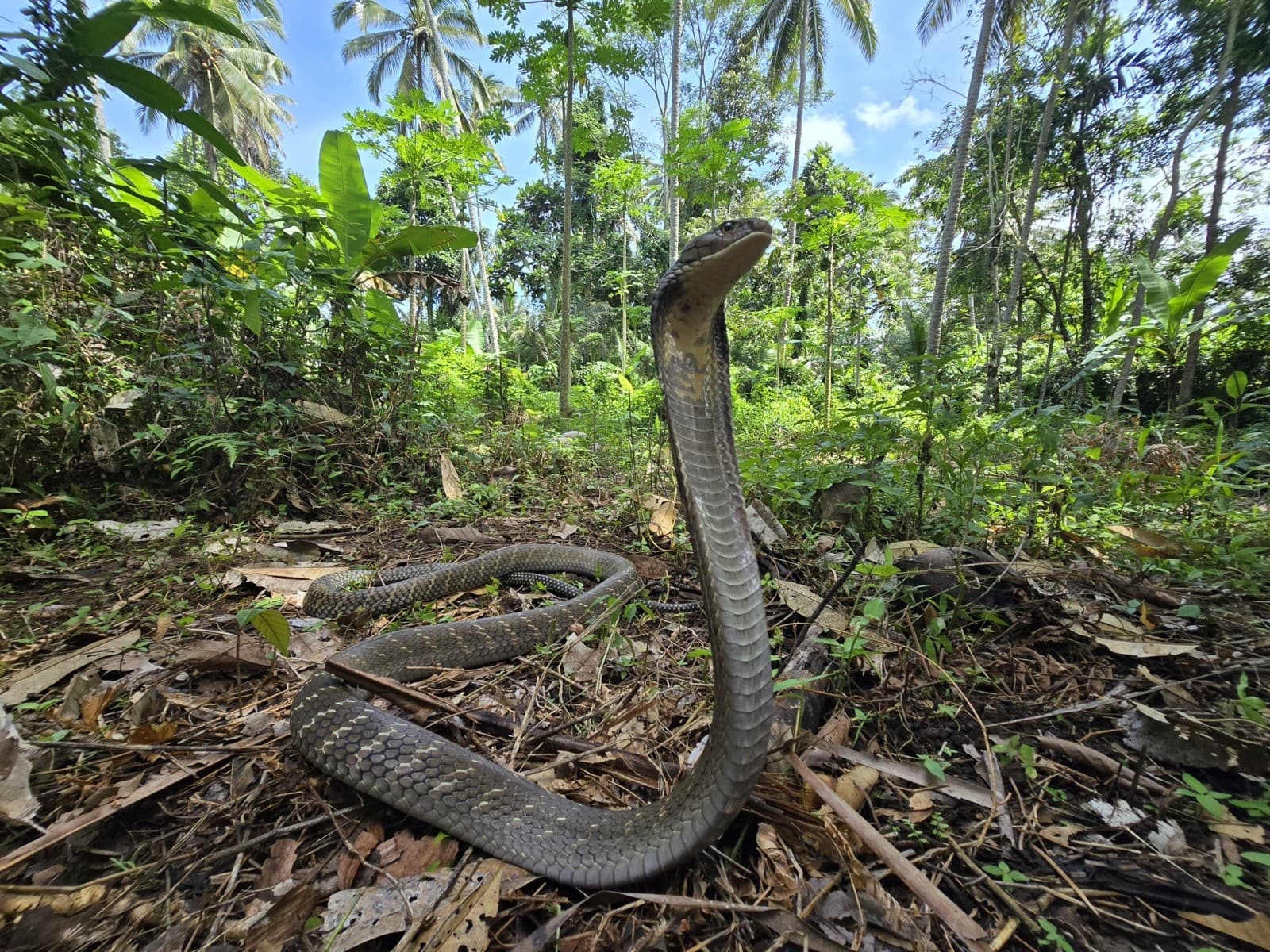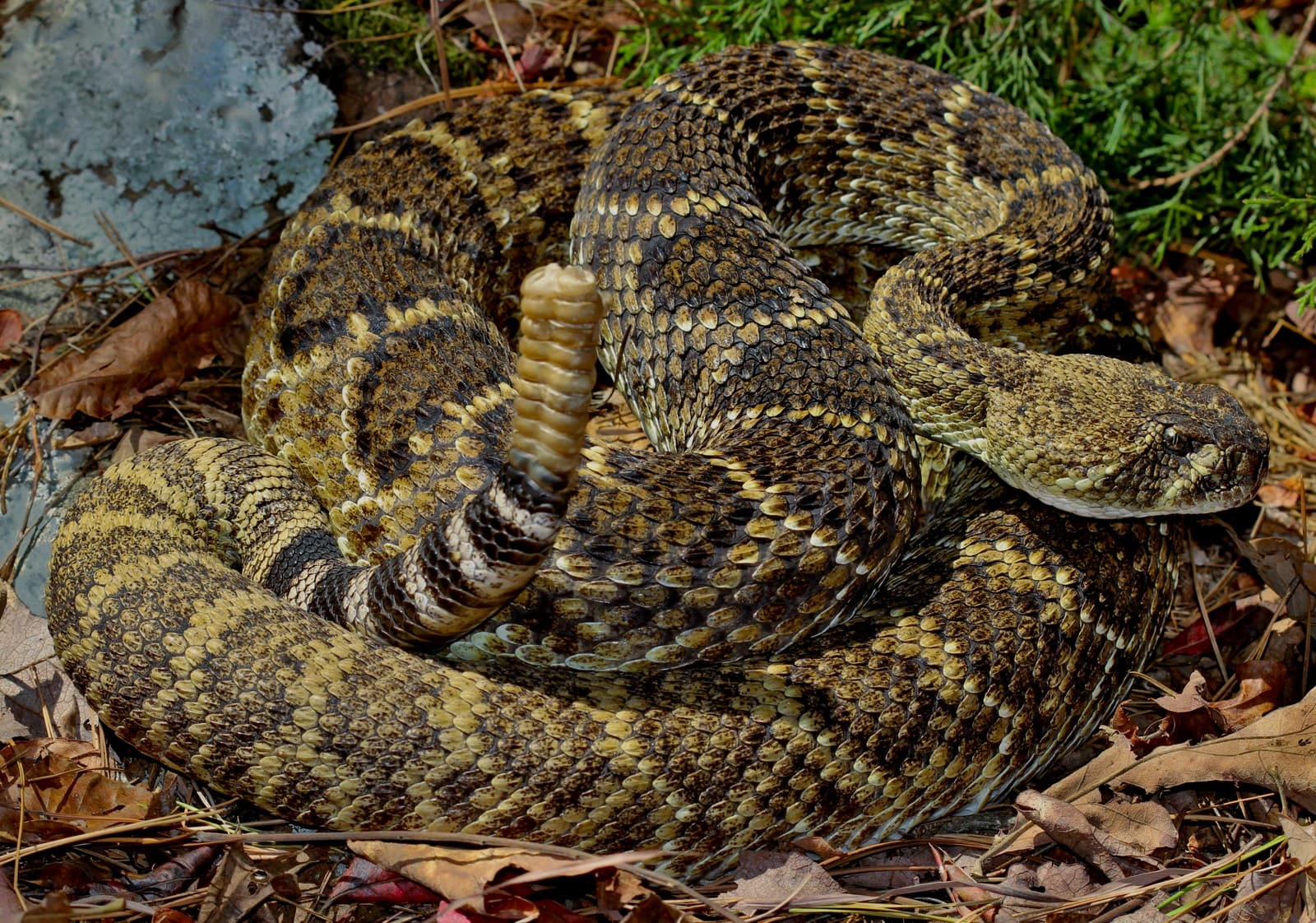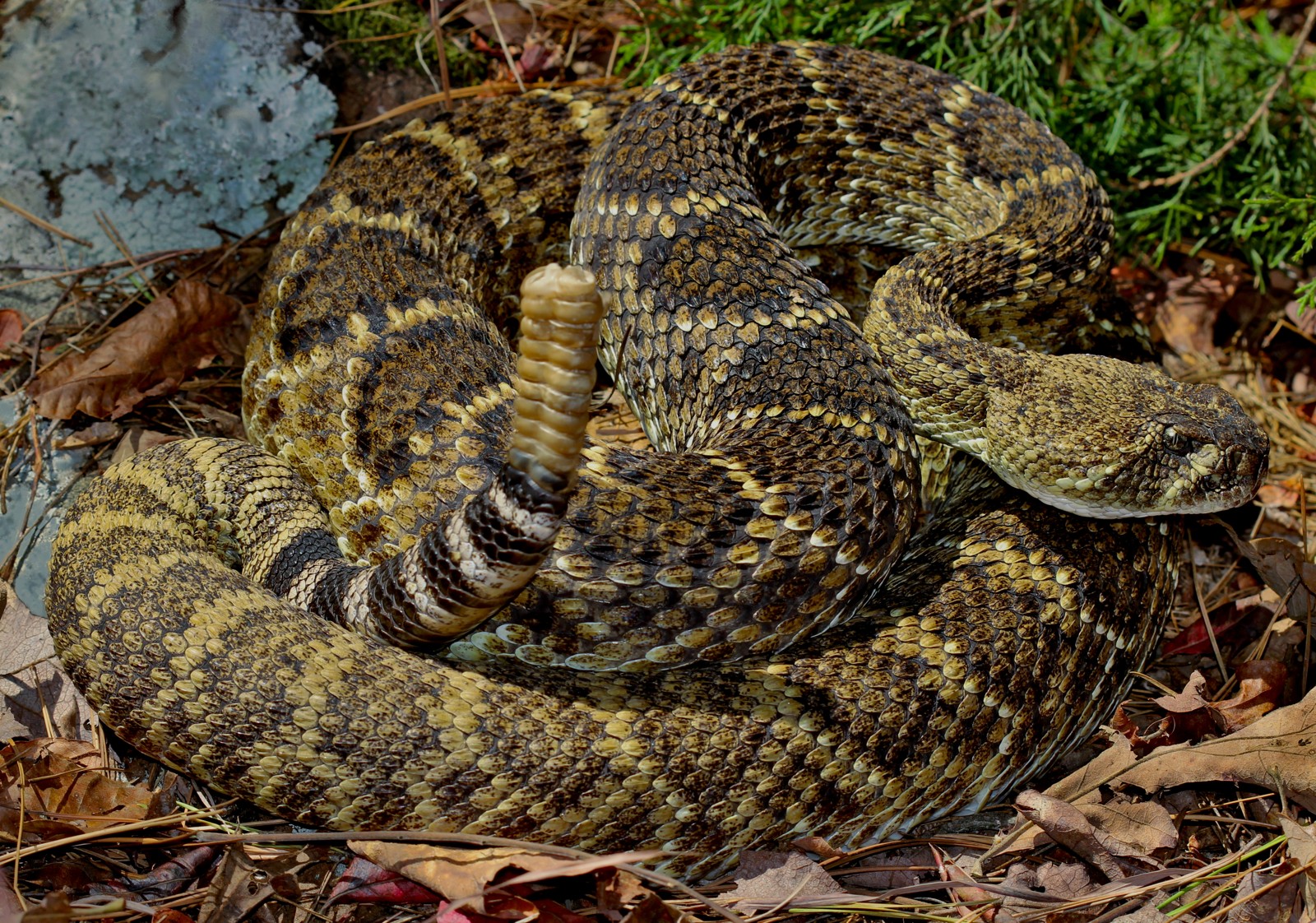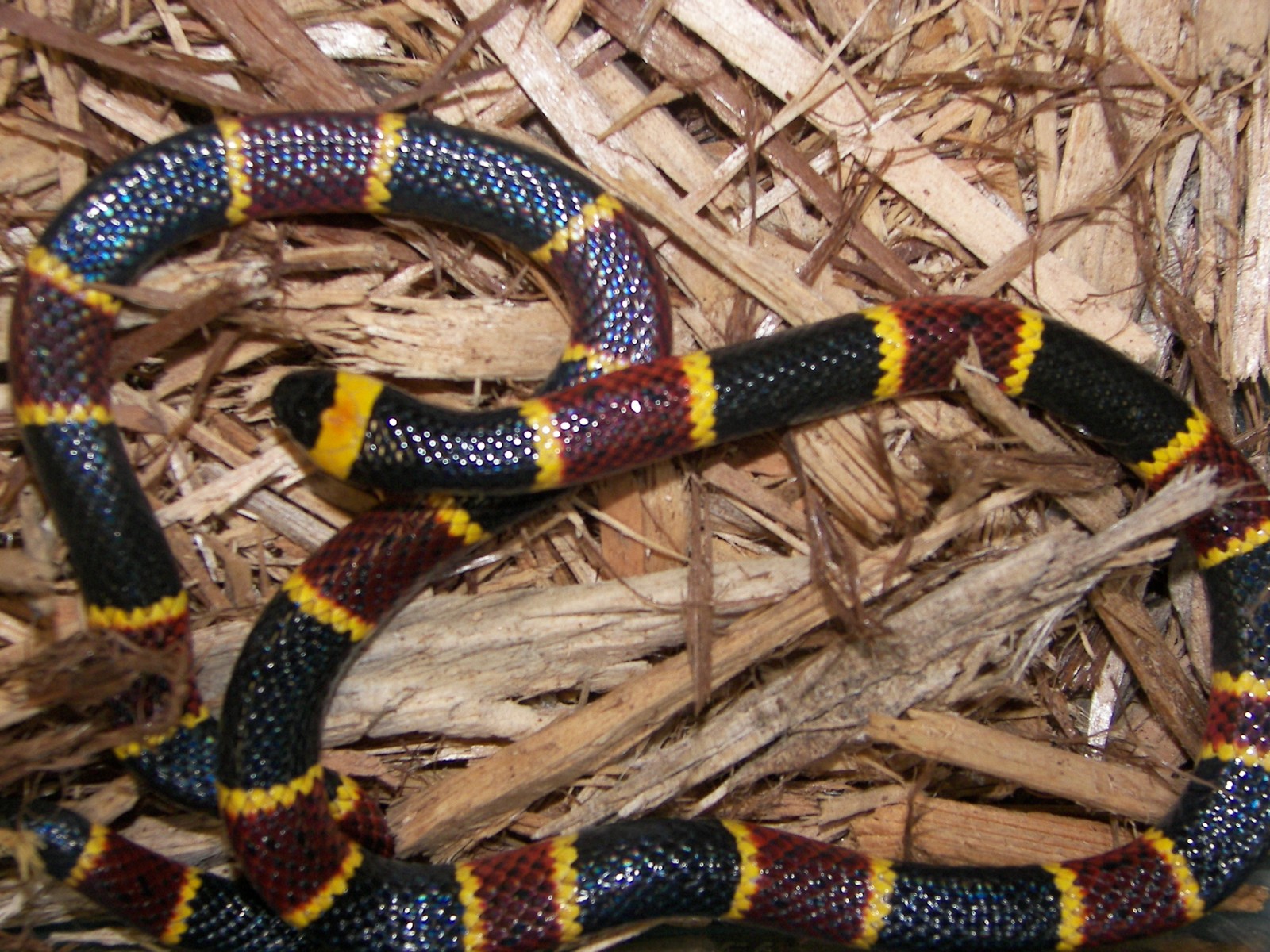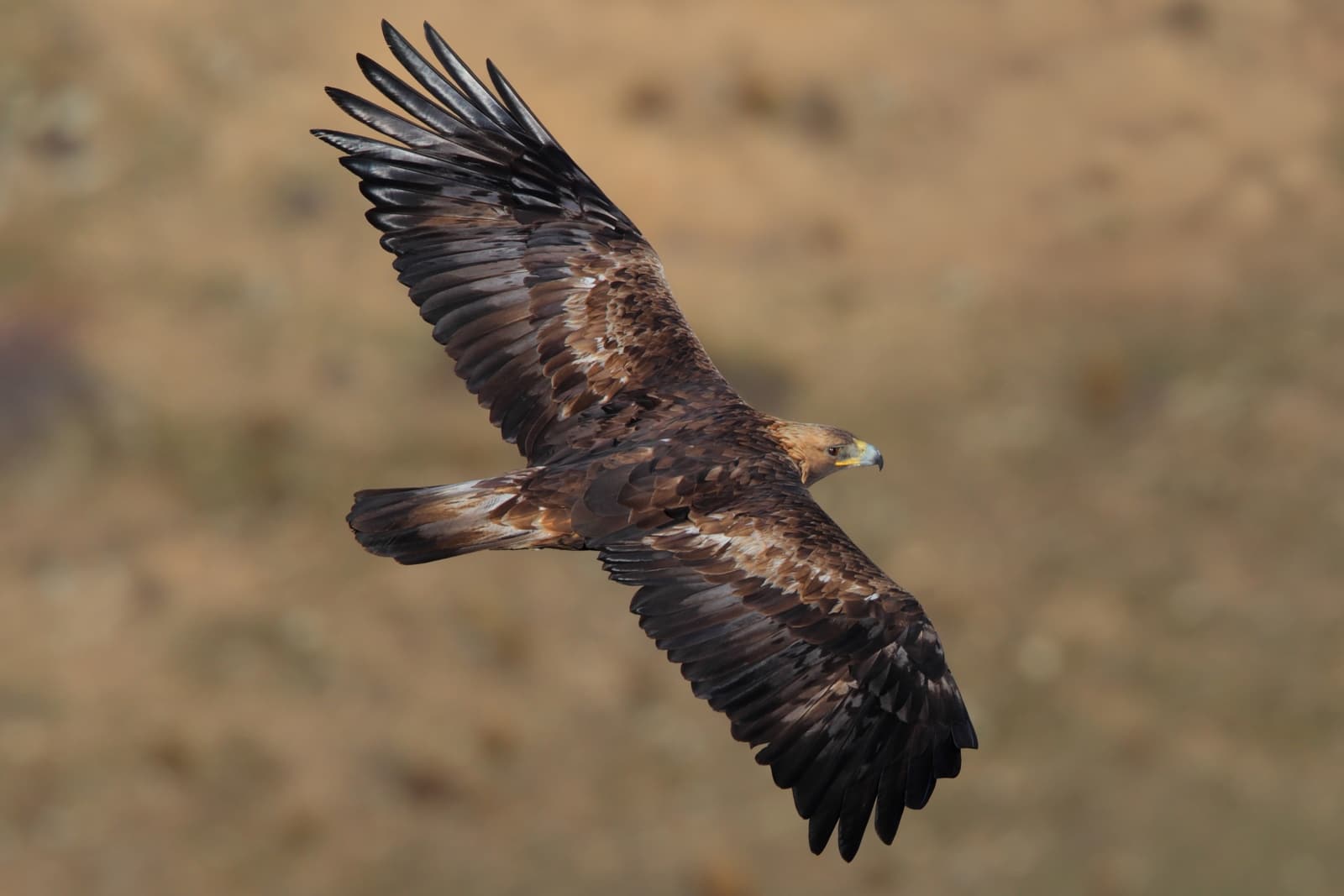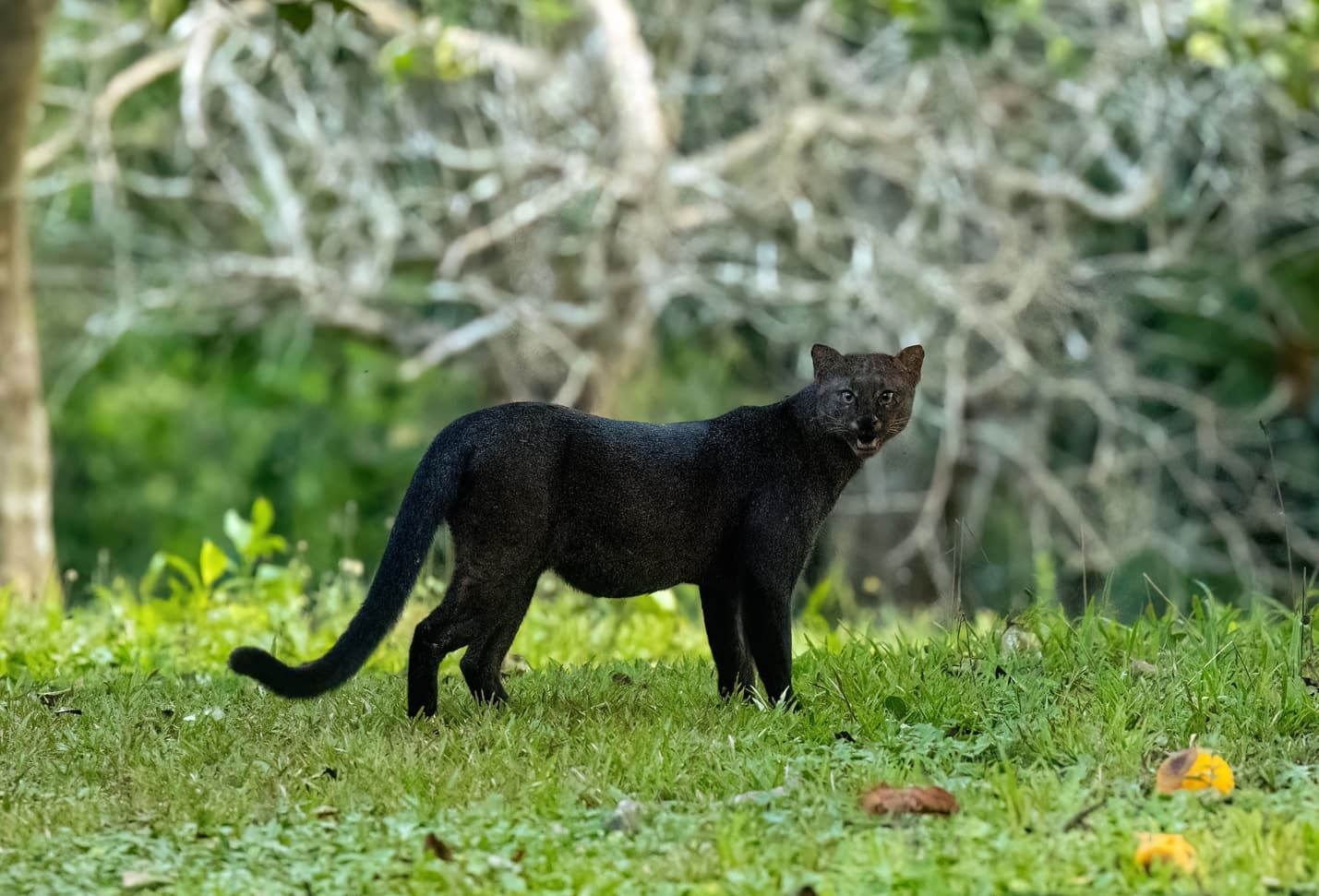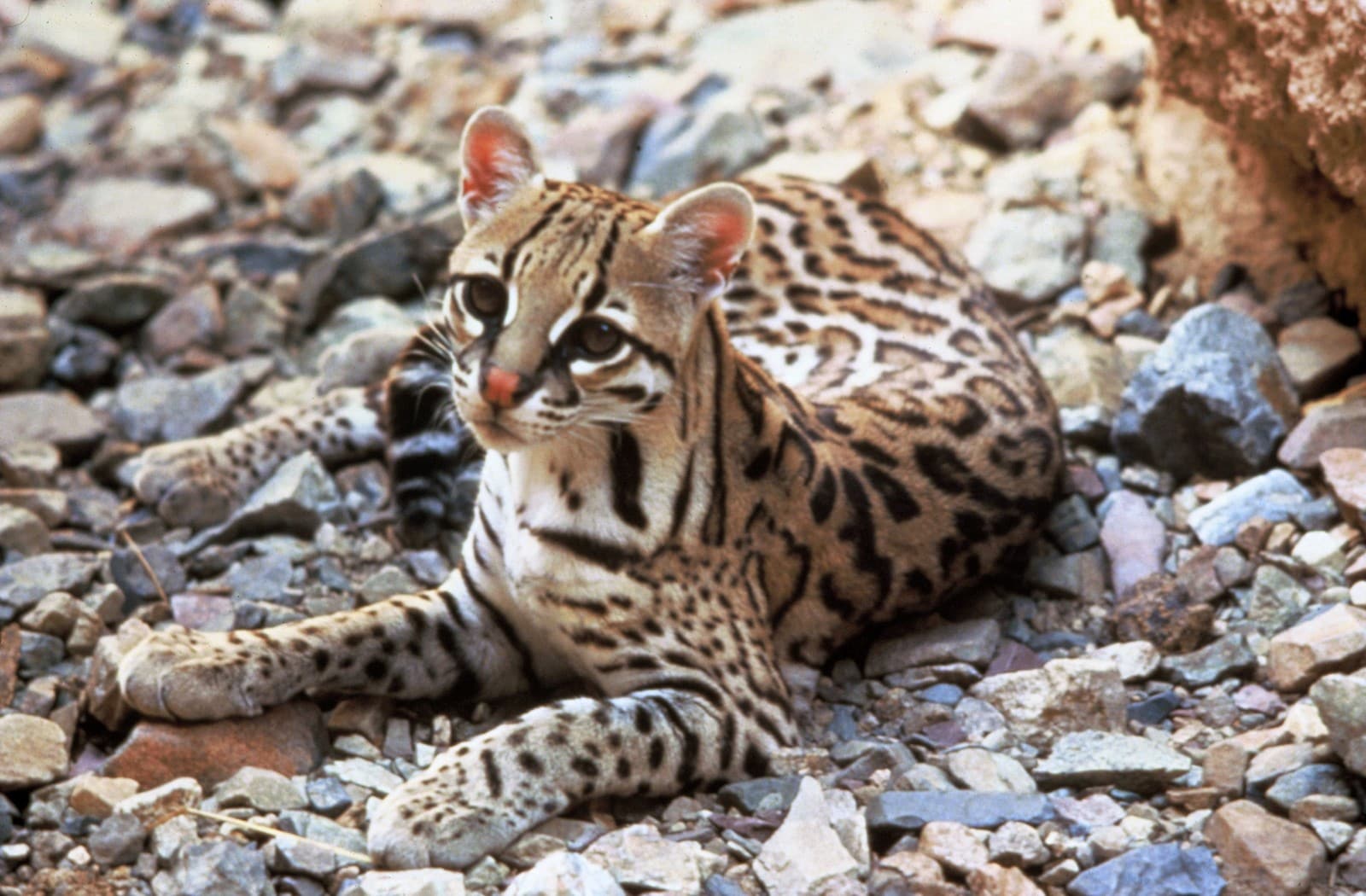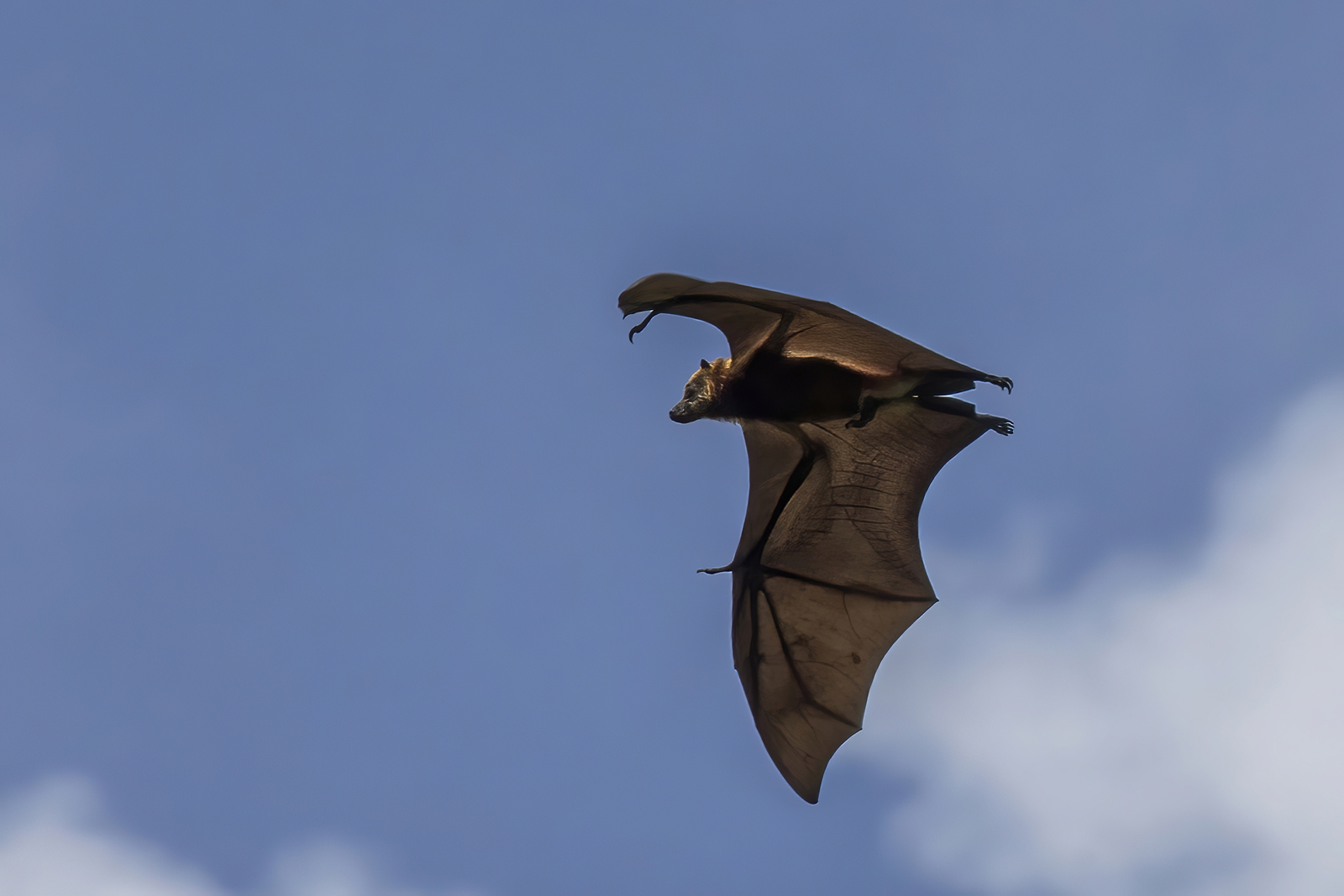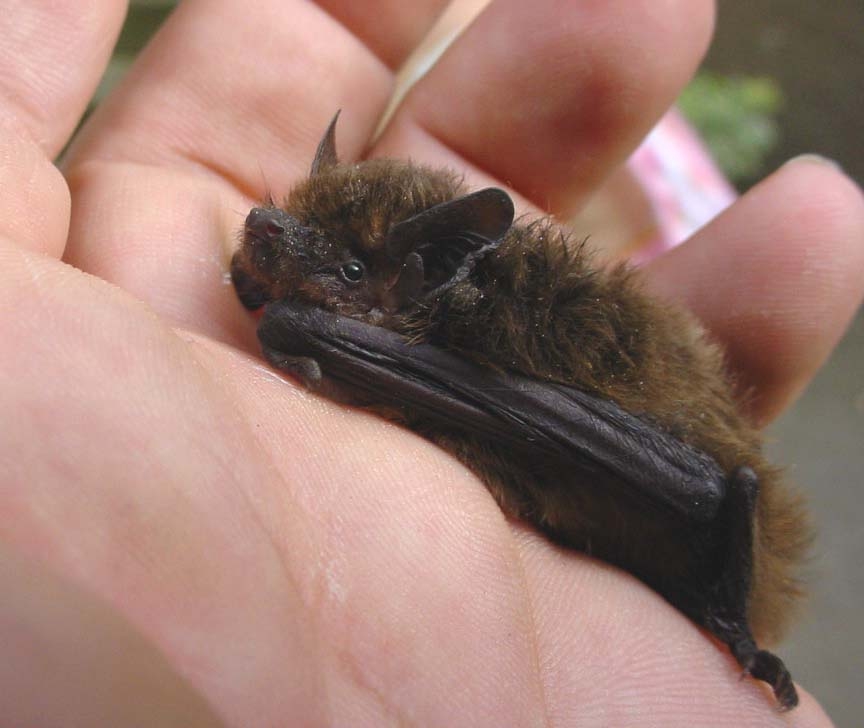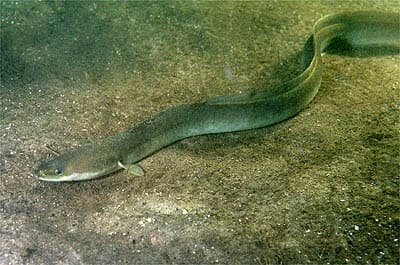Bull Snake vs Rattlesnake: A Complete Comparison
When encountering a snake in North America, distinguishing between a Bull Snake and a Rattlesnake can be crucial for safety. While these two species may appear similar at first glance, they have distinct characteristics that set them apart. Bull Snakes (Pituophis catenifer) can grow to impressive lengths of 8 feet (2.4 meters), making them one of North America’s largest non-venomous snakes, while most Rattlesnakes typically measure 3-4 feet (0.9-1.2 meters).
The most significant difference between Bull Snakes and Rattlesnakes lies in their defensive adaptations. Bull Snakes are non-venomous constrictors that mimic rattlesnakes by flattening their heads, hissing loudly, and vibrating their tails against dry leaves. Rattlesnakes, conversely, possess potent venom and their signature segmented rattle, which serves as a clear warning signal to potential threats.
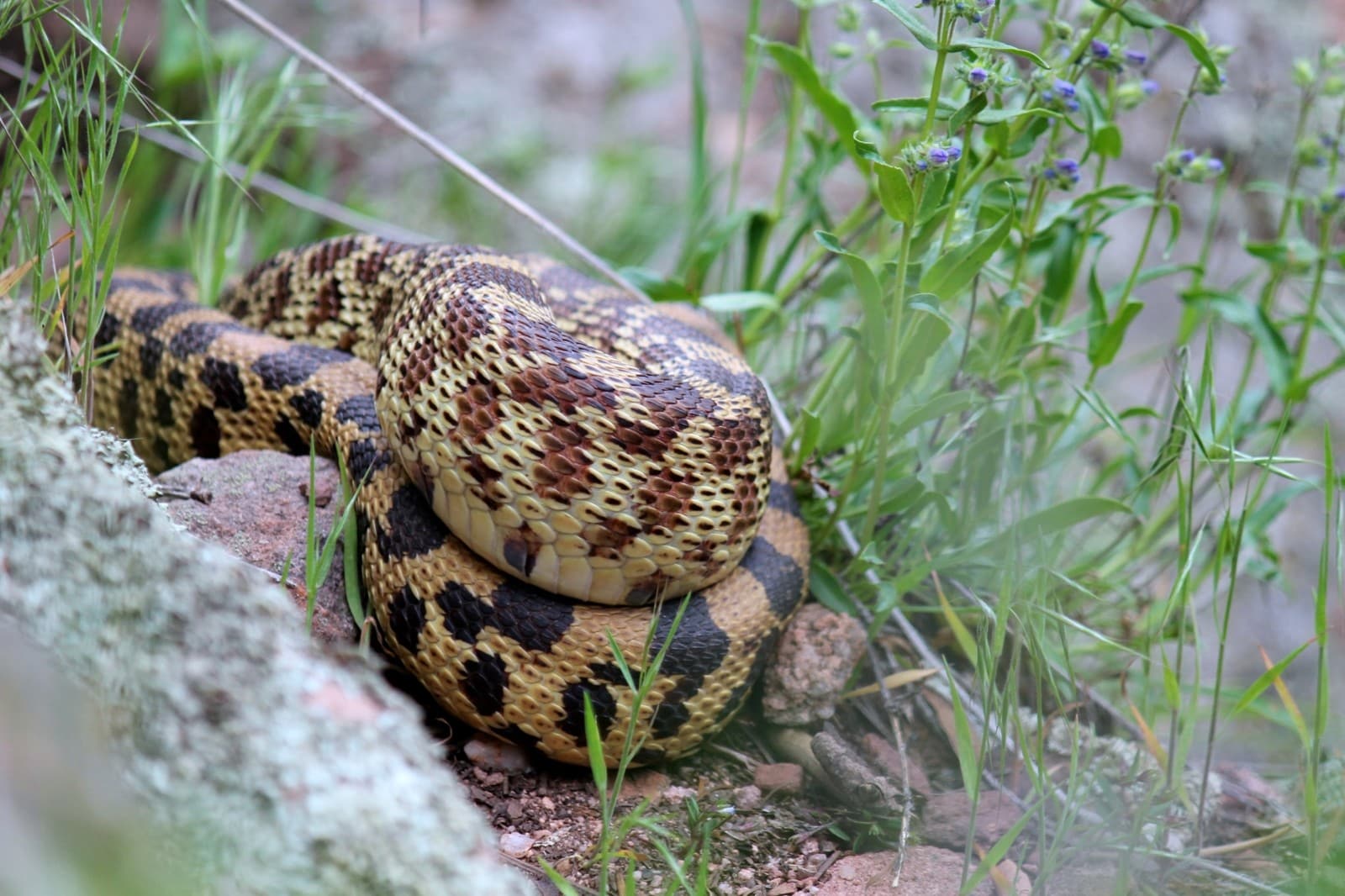
© Rick Farwell / CC BY 4.0
The Bull Snake displays its characteristic robust build and intricate pattern of brown and black blotches on a yellowish background. Note the smooth, round head shape and lack of rattle, key features distinguishing it from its venomous counterpart.
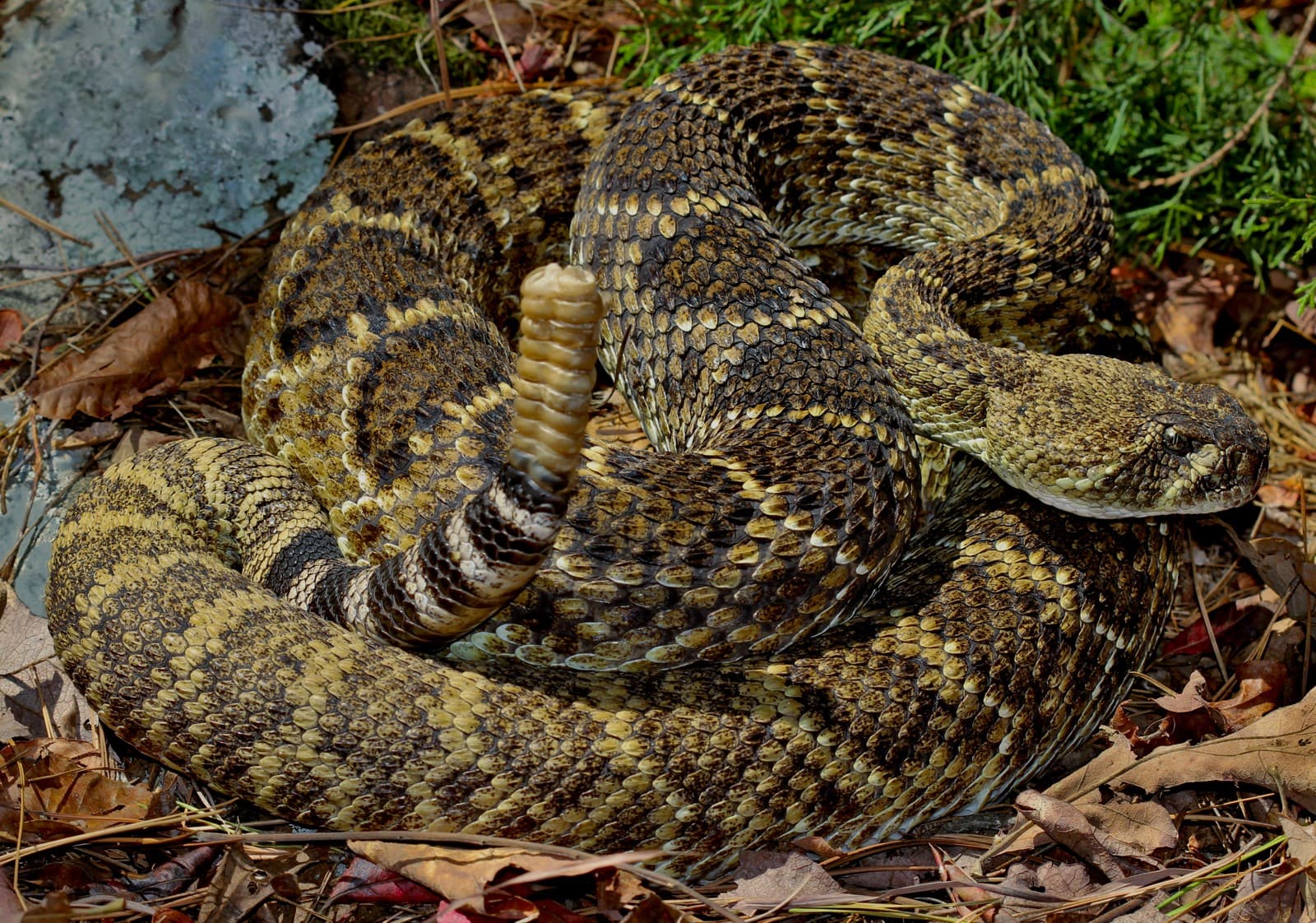
© Peter Paplanus / CC BY 2.0
The Rattlesnake exhibits its distinctive triangular head and heavy-bodied form. The visible rattle and defensive coiled posture are telltale signs of this venomous species.
| Feature | Bull Snake | Rattlesnake |
|---|---|---|
| Length | Up to 8 feet (2.4 m) | 3-4 feet (0.9-1.2 m) |
| Head Shape | Narrow, rounded | Broad, triangular |
| Tail | Pointed, no rattle | Distinct segmented rattle |
| Pupils | Round | Vertical (cat-like) |
| Venom | Non-venomous | Highly venomous |
| Scale Texture | Smooth | Keeled (ridged) |
Identification Features That Could Save Your Life
The most reliable way to distinguish between a Bull Snake and a Rattlesnake is by examining specific physical characteristics. Bull Snakes have round pupils and a narrow head that’s barely wider than their neck. Rattlesnakes possess vertical, cat-like pupils and a distinctly triangular head with heat-sensing pits between their eyes and nostrils.
Habitat and Distribution
Bull Snakes thrive in various environments across North America, from prairie grasslands to open woodlands, typically at elevations below 7,000 feet (2,134 meters). Rattlesnakes, depending on the species, can be found in diverse habitats ranging from desert floors to mountain forests, with some species occurring at elevations up to 11,000 feet (3,353 meters).
Behavior and Defense Mechanisms
Both species exhibit fascinating defensive behaviors. Bull Snakes are known for their remarkable rattlesnake mimicry, including:
- Flattening their heads to appear triangular
- Producing loud hissing sounds
- Vibrating their tails against debris
- Striking aggressively when threatened
Rattlesnakes rely on their actual defensive equipment:
- Segmented rattle warning system
- Potent hemotoxic venom
- Heat-sensing pits for precise targeting
- Quick-strike capability
Diet and Hunting Methods
Bull Snakes are powerful constrictors that primarily target:
- Small mammals (rats, mice, rabbits)
- Ground-nesting birds and eggs
- Occasional lizards
Rattlesnakes employ venom to subdue their prey:
- Small mammals
- Birds
- Lizards
- Other snakes
Conservation and Human Interaction
Both species play crucial roles in controlling rodent populations, yet face similar threats:
- Habitat loss
- Road mortality
- Intentional killing due to misidentification
- Agricultural development
Who Would Win in a Fight?
While such encounters are rare in nature, a matchup between a Bull Snake and a Rattlesnake would likely favor the Rattlesnake due to its venomous capability. However, Bull Snakes are known to actively prey on smaller rattlesnakes, demonstrating remarkable immunity to rattlesnake venom. The outcome would largely depend on the size of the individuals involved and the specific circumstances of the encounter.
Remember: The best approach when encountering either species is to maintain a safe distance and allow the snake to retreat. Despite their differences, both snakes deserve respect and play vital roles in their ecosystems.
